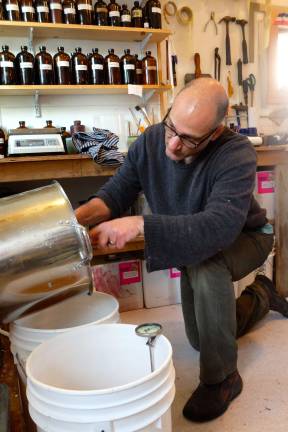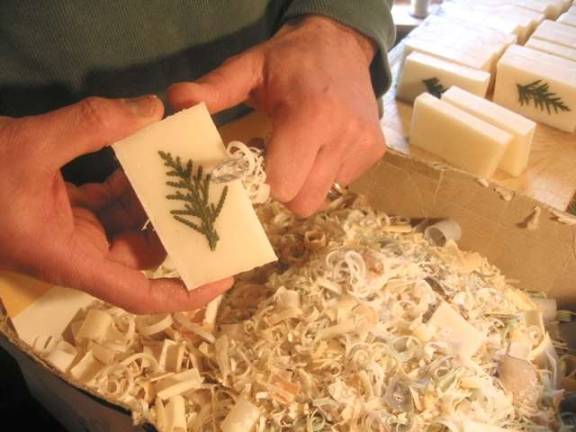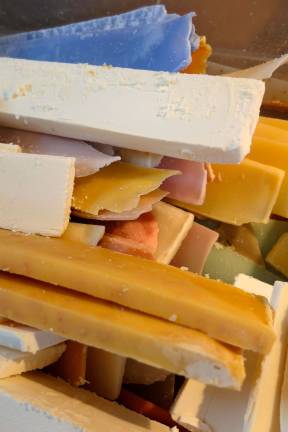An adventure in slowing down














Kiki Rosner weighs lavender and litsea essential oil into a jug, and measures out purple and blue mineral-based pigments. Her husband Yaron keeps an eye on the pot of melting coconut and palm oil. A glistening bucket of olive oil waits nearby. It’s time to replenish the shelves at Rosner Soap.
The Rosners became soap makers by happy accident. Walking down a street in Israel, they spotted a store window full of colorful goodies. They popped inside for a snack, thinking it was a bakery. It turned out to be a soap store.
The Rosners were already in the process of moving to the craft village of Sugar Loaf, New York. Yaron wanted a break from teaching commercial photography, and Kiki, an English language instructor for company executives, wanted to do something creative that would accommodate their two young daughters. She had studied natural healing and was well versed in the use of pure botanicals for body care.
“When we said, ‘Let’s move to the United States,’ we were not really sure what we want to do,” recalled Yaron. What they did know was that they wanted to go on an adventure, find something completely different. “When we saw this store, both of us said immediately: ‘Soap. That’s what we can do.’”
Sixteen years later, Yaron checks the temperature of the cooling alkali base before he blends it with the vegetable oils, pigments, and aromatic essential oils. At this stage, he adds botanical exfoliants to various blends, like poppy seeds, green tea, and seaweed. He jokes that they are more chefs than chemists.
Next, the soap will cool for 24 hours before it is cut into blocks and left to cure for four to six weeks. Soap making, much like life in a hamlet of artisans, is slow.
“Coming from Paris and from Tel Aviv, Sugar Loaf is a very small place,” said Yaron, “but New York City is not far. We managed to raise two beautiful kids here. There is space. We find a lot of creativity, still, after all these years. It’s a very creative field, that you play with scent, colors, shape. We feel very appreciated by customers.”
“Sometimes this place is very small,” he said, but “it came out to be the right adventure.”
Melissa Shaw Smith